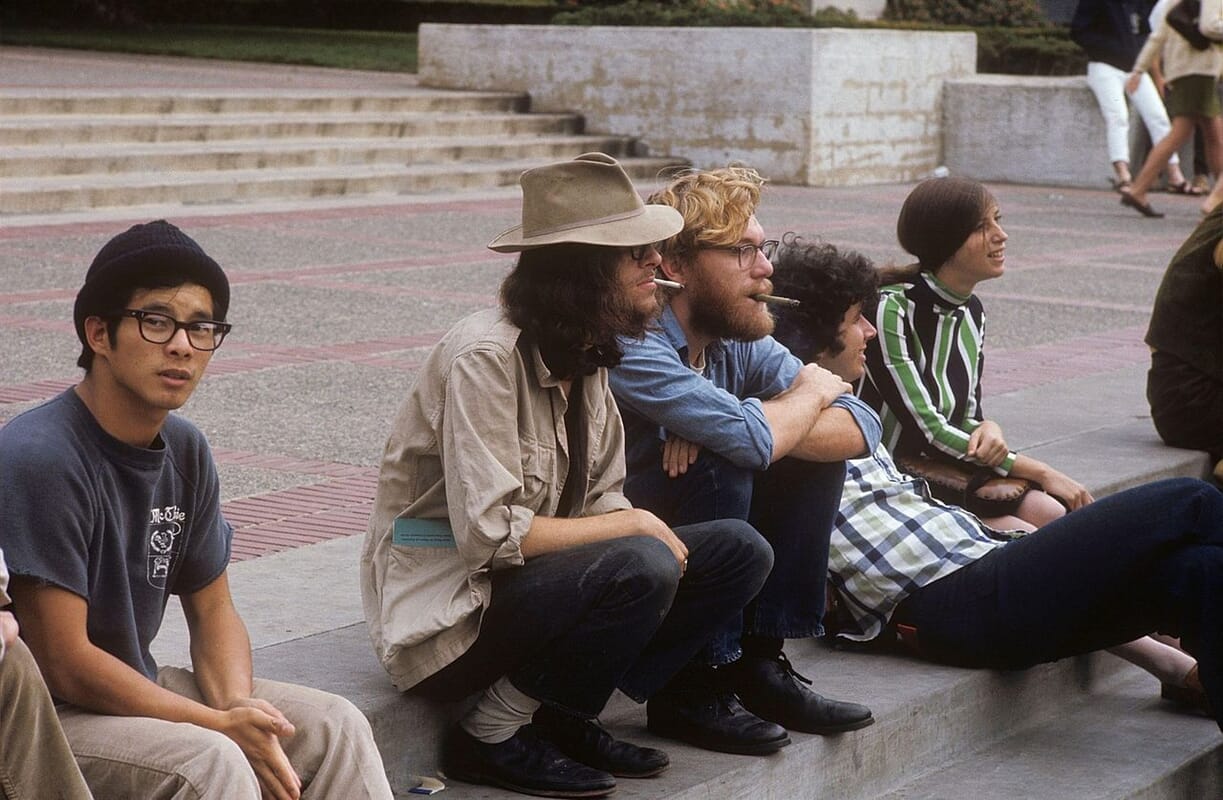
1969: A Night Under the Stars
It was 1969, and there we were, a tight-knit group of teenagers on a school camping trip in the mountains. My buddy Jimmy, always the adventurous one, promised he’d bring some marijuana from his sister. The night was clear, and we lay in our sleeping bags under a canopy of stars, sharing stories and waiting for Jimmy. When he finally joined us, he pulled two joints from his backpack. For most of us, it was our first time.
Excitement filled the air as we each took turns smoking. There were a few coughs, bursts of giggles, and a lot of anticipation. The cannabis back then, often Mexican ragweed, had a THC content of just 4 to 6%. It took its time to kick in. About 15 minutes later, Jimmy asked, “Feel the buzz?” And there it was—a tingling sensation, an uplifting feeling. A body high that started in the arms and legs and worked its way up.
We found ourselves immersed in deep, sometimes silly conversations, laughing and feeling a bond that only this shared experience could bring. Back then, the wait for the high was part of the fun. We used to joke that it took 20 minutes to know whether it was real weed or just oregano!
March 2024: A Different Scene
Fast forward to March 2024. I’m in Boston, Massachusetts, catching up with my old friend Larry. Every Friday, Larry, now a retired businessman in his 70s, plays cards with a group of other retirees. Larry was a wild spirit in his youth, part of the Woodstock Folk Festival and the counterculture movement. Recently, he started enjoying weed again now that it’s legal.
Larry shared a story from the previous Friday with me. He had bought a pre-roll from a dispensary and offered to share it with his friend Fred in the parking lot before their card game. They smoked, but the experience was nothing like our youthful nights. “Isn’t there any weed that is not so fucking strong? Gene, remember when smoking grass was fun? Can’t we enjoy some nice weed and have fun like when we were kids?” Larry continued: “My friend Fred never made it to the card game. He spent the next hour after smoking, sitting in the back seat of his car questioning the validity of his life and all the things that might go wrong.”
The Potency Paradox
Larry’s question lingered in my mind: “What happened to the fun?” Today’s cannabis market is dominated by super-high THC strains. Consumers are led to believe that higher THC means better quality, but this is far from true. This belief is turning many new or returning users away, as they find the experience too intense, even distressing. What seems to be lost in the intense pheno-hunting for high THC strains is the body and head high as distinguished from what we used to call “expanded consciousness,” now known as the psychotropic high.
Cannabis is a remarkable plant with a rich history of medical and recreational use dating back over 12,000 years. Our ancestors, who began cultivating cannabis in Southeast Asia, understood its multifaceted benefits. They didn’t chase after higher THC levels. Instead, they developed strains that offered practical uses, medical benefits, and an enjoyable, manageable high.
For recreational use, they sought a balanced experience—a comforting body high that allowed the mind to enjoy the psychotropic effects of THC without discomfort. This thoughtful cultivation is why landrace strains from regions like India, China, and Thailand have stood the test of time.

Quality Over Quantity
Today’s cannabis culture needs to shift its focus from THC content to the overall nature of the “high” experience. A high-quality strain provides a balanced high, combining the body and head effects harmoniously. Scientific studies confirm that aroma, not THC percentage, is crucial in determining the enjoyable effects of cannabis. Strains with rich terpene profiles and a variety of cannabinoids often offer a more rounded, pleasurable experience, even if their THC content is not the highest available.
From experience, it appears that strains rich in the mix of terpenes, cannabinoids, and other biochemicals can provide a strong body and head high (‘buzz”), which comes on before the psychotropic and sometimes unnerving “expanded consciousness” caused by THC. This “buzz” or glow seems to provide us with a comforting and soothing overall feeling that helps ease us into the THC psychotropic high. This body/head high also appears to last longer than the typical 30 minutes of expanded consciousness delivered by THC. A recent John Hopkins Medicine-led team’s study may provide some underlying science behind this experiential understanding. The study has shown that sufficient amounts of terpene limonene will “offset” or moderate the uncomfortable and sometimes distressful impact of THC.
Consumers should demand flower that promises a balanced high rather than just a high THC content. This shift could bring the fun back into cannabis use, ensuring that both new and experienced users can enjoy it without fear.
So, let’s remember those nights under the stars, the laughter, the bonding, and chase the feeling of fun, togetherness, and expanded consciousness. Maybe then, we can rekindle the joy that marijuana once brought to our lives.
The journey of cannabis from our youth to today’s potent strains reflects broader cultural shifts. Let’s reconnect with the plant’s rich heritage and original intent—to bring us together, elevate our spirits, and open our minds.
For a deep dive into the scientific studies regarding THC and cannabis enjoyment you can explore these research articles.
Researchers Show Chemical Found Naturally in Cannabis May Reduce Anxiety-Inducing Effects of THC
Author’s Note:
The journey of cannabis from our youth to today’s potent strains reflects broader cultural shifts. Let’s reconnect with the plant’s rich heritage and its original intent—to bring us together, elevate our spirits, and open our minds.



